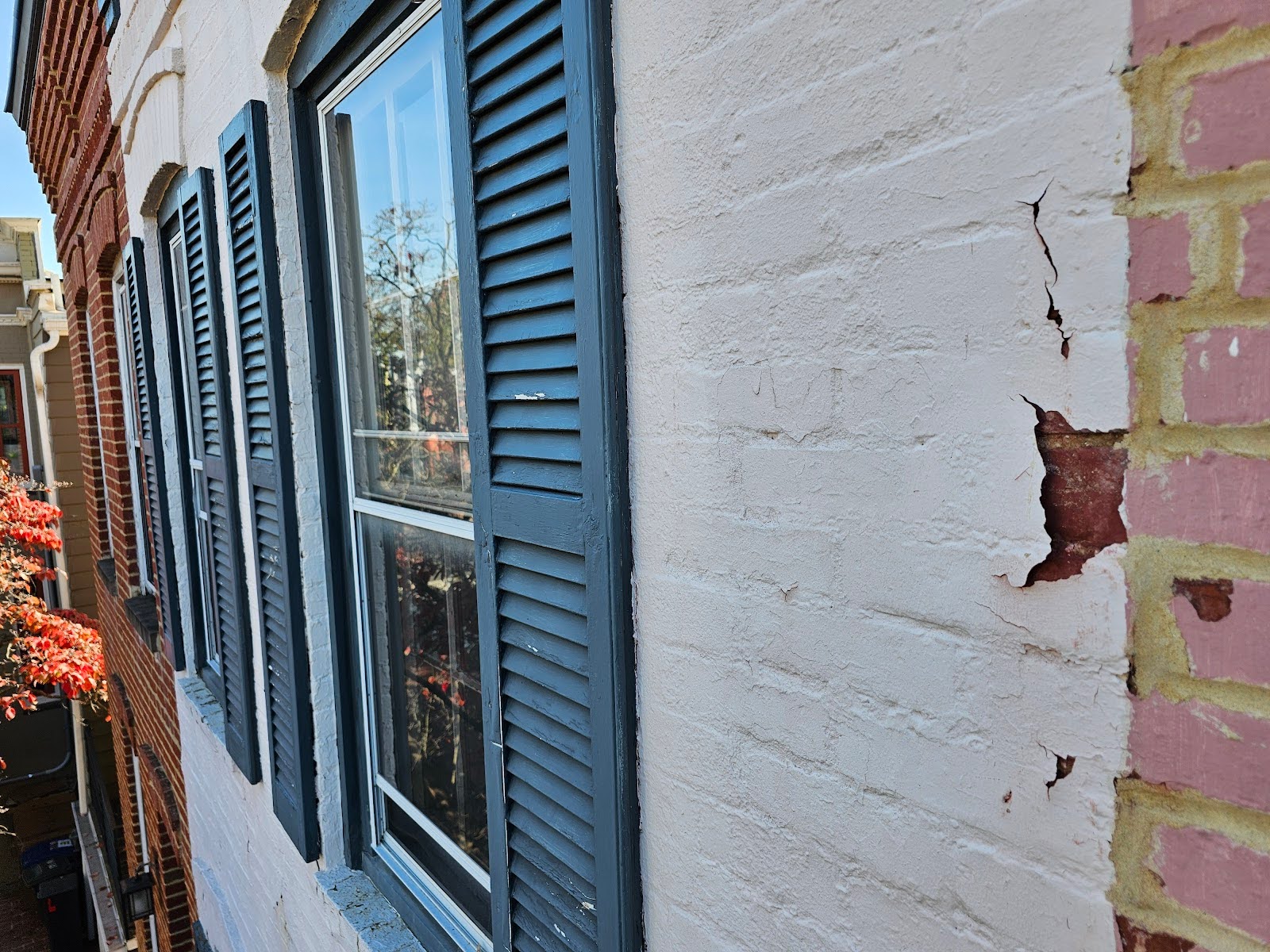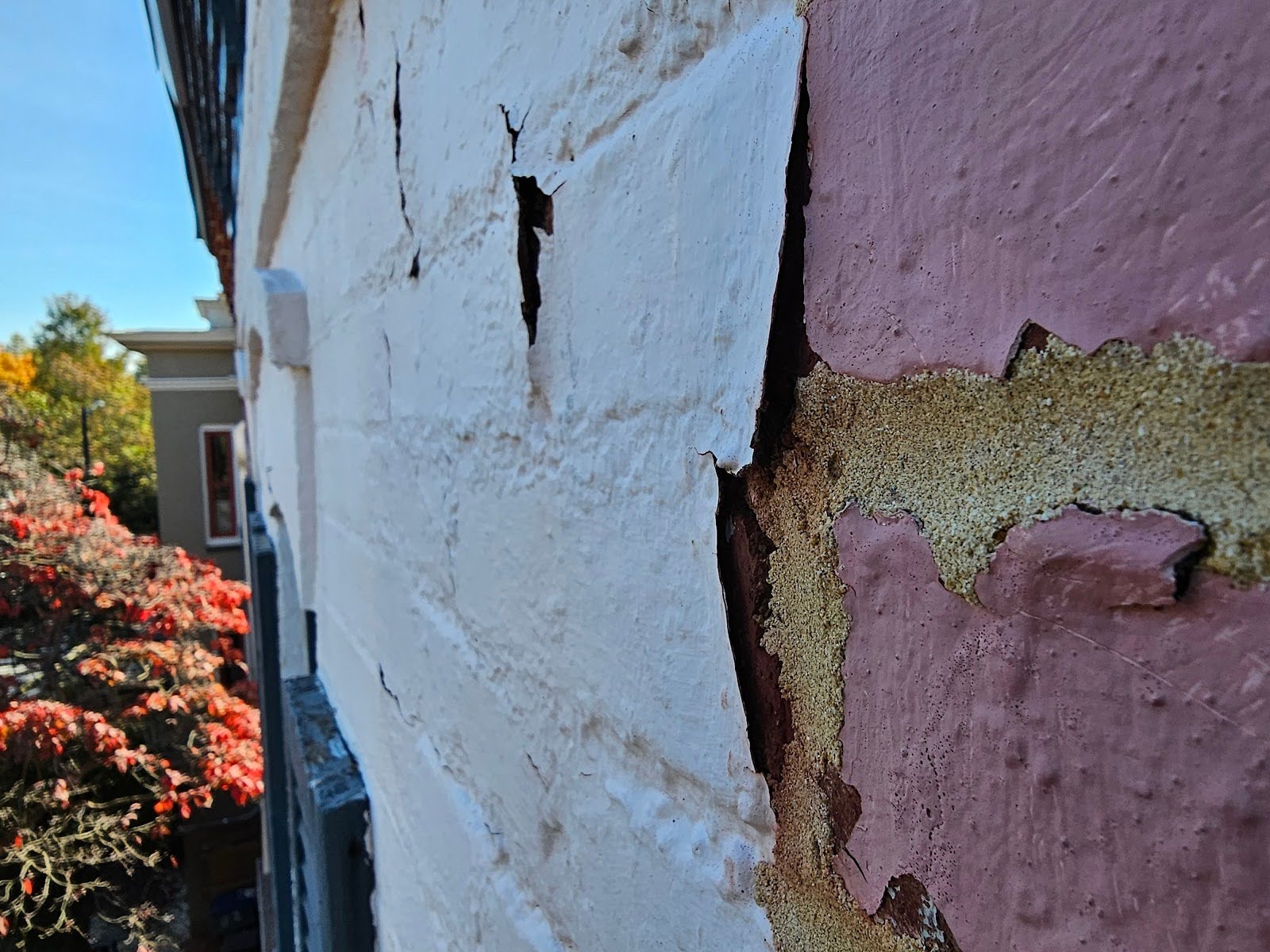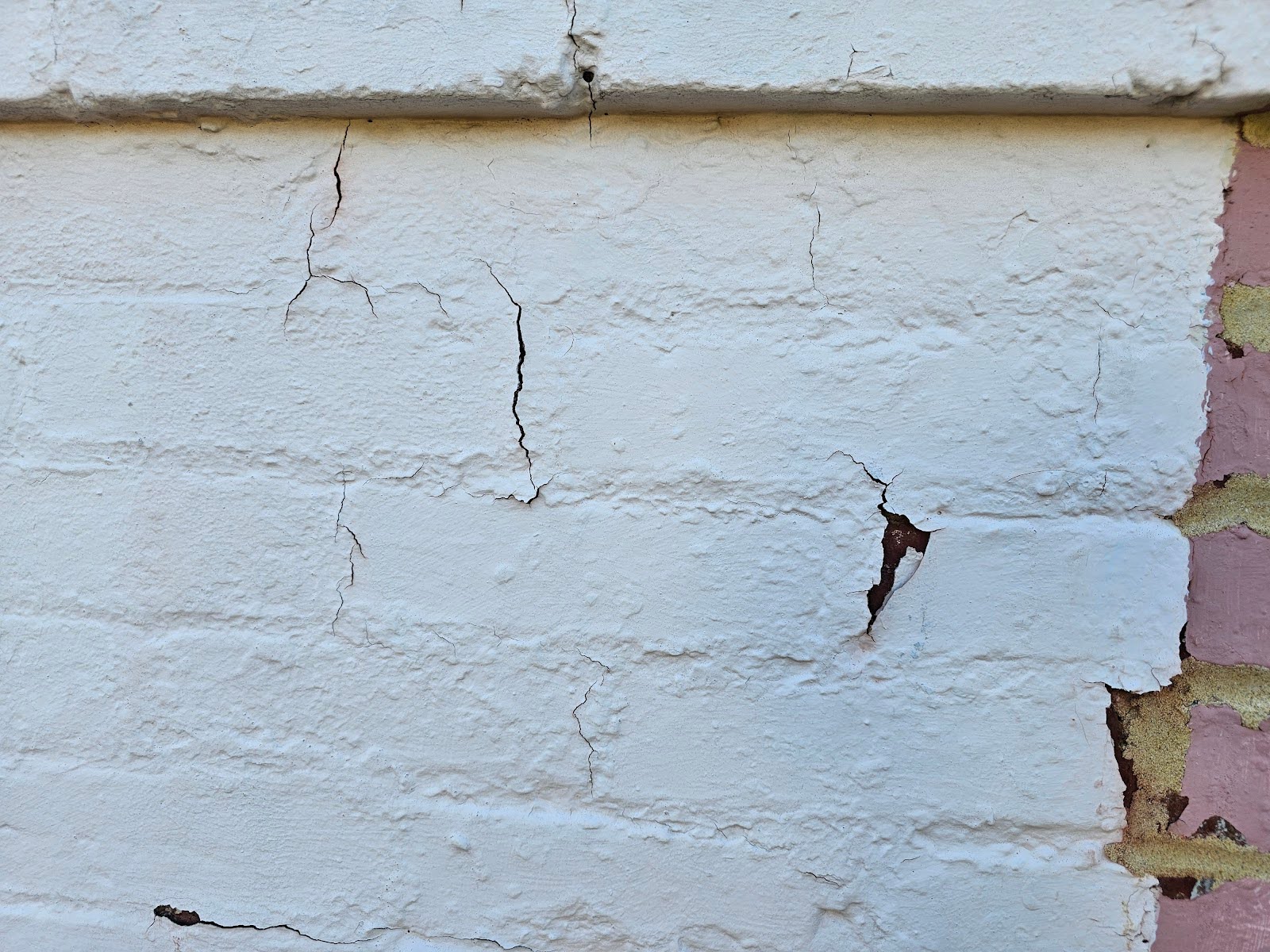Pros & Cons of Paint Historic Brick
This past week, we started looking at a new topic of whether or not it’s a good or bad idea to paint historic masonry facades. The occurrence of painted brick facades in Washington DC is significant; in some areas, the vast majority of facades have already been painted. We discussed this this past week. It is not perfectly cut and dry or very clear whether or not it’s good or bad to paint masonry building facades, but in the pictures below, we look at so many examples of where delaminated and or poorly maintained paint can cause damage to the masonry.
As water stays trapped in these areas, from much longer time periods the water seeps into the masonry. A higher amount of water than normal absorbs into the brickwork. Essentially, these areas of delaminating paint are causing higher degrees of water entry. In our winter season, that becomes an obvious problem because it can lead to damage during freeze-the cycles where brick that is saturated with water or the associated surrounding mortar joints become damaged by the expanding freezing water.

Even in times when it’s not freezing temperatures, the prolonged exposure to higher amounts of hydration and water will also cause more damage and deterioration to the brick. As water enters into those brick mortar joints into the face of the brick itself, it will over time allow for the substrate materials to be dissolved to a degree. Often you can find residues of efflorescence trapped behind the paint, set between the face of the brick and the interior underside of the paint coating. These efflorescence deposits are dissolved salts that occur naturally within the brick and mortar. They’re dissolution and separation from the brick substrate indicates that deterioration is happening through excessive hydration.

The next picture shows a different area of the same building, this time, at the header above a window at the lower level. Here, the brick header is built with brick and is treated in a decorative way by a protruding brick course that extends beyond the face of the main field of the brickwork.
The paint that spans over that header brick is cracked at the surface, at the area underneath of the surface, there is delamination which creates a pocket that allows water to enter into the area behind the paint. The problem with water getting into that area, into that pocket of space between the delaminated paint and the brick substrate, is that water in that area doesn’t get out easily. It can’t just evaporate right away. It’s essentially trapped.

The next picture below shows an area where the paint of the building to the left has separated from the brick substrate. At this vertical separation, water can enter in from the side and then stay trapped against the face of the brick. This particular location happens to be coincident with the transition between this building and the neighboring building.
The brick walls between these two buildings have no actual demarcation or separation, other than the paint itself. You can follow the line of separation between the buildings because that area of demarcation happens to be coincident with the parapet wall at the roof, but other than the paint itself there’s no other visual indicator at the face of the brick wall.

Water builds up and stays trapped behind this paint, and not only damages the masonry of this building, but over time can permeate into the masonry assembly so deeply that it could even make its way over to the neighboring side of the building. Essentially, the lack of upkeep and maintenance of the paint on the facade of the one building can even affect the neighboring building, because they are connected.

It’s picture below shows that intended area of demarcation, there’s a corbel, essentially set at the top of the brick wall, just below the applied cornice that creates a termination of the roof membrane. The actual perimeter of the front facade, of each property, should be set halfway, from left to right, underneath of that corbel. In this case the corbel is the protruding brick that’s painted a dark blue color.
The remainder of the field of the wall and this property is painted white however, if it was done more accurately, the white paint should have really extended down from the middle of that corbel area instead of at the edge of the corbel area. Many people do not understand the actual property boundaries.

Our company, Dupont Tuckpointing and Masonry, specializes in masonry restoration, historic brick repointing, and tuckpointing services in the Washington D.C. area. These buildings are uniquely historic, and their preservation requires skilled masons who are technically trained in the best practices and knowledge of proper restoration techniques.
We understand the significance of maintaining the architectural integrity of these historic structures, and our team of experienced professionals is dedicated to delivering exceptional craftsmanship. Whether you require masonry restoration, tuckpointing, or brick repointing services, we are here to help.
At Dupont Tuckpointing and Masonry, we take pride in our work and strive to ensure that every project is executed with the utmost care and attention to detail. We are committed to preserving the rich heritage of Washington D.C.’s built environment for generations to come.
If you have any questions or needs regarding masonry restoration, historic brick repointing, or tuckpointing services, please do not hesitate to reach out to us. We would be delighted to assist you and provide you with the expertise and quality workmanship that your historic property deserves.
You can reach us by telephone at (202) 796-7644 and you can reach us by email from the contact form on our website at https://duponttuckpointingmasonrydc.com/contact-us/.




